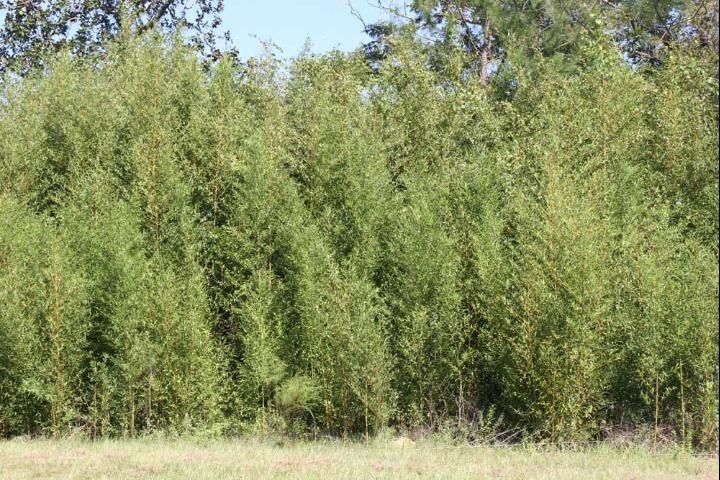Bamboo is a large perennial grass that has been used as an ornamental plant for many years. There are several different species of bamboo that range in size from 1 to 70 feet tall (Figure 1), but only one species, known as cane or canebreak bamboo, is native to the US. Generally speaking, this native bamboo is not extremely "weedy" and is relatively easy to manage. However, there are scores of imported bamboos that are highly invasive and exceedingly difficult to contain. These invasive varieties have large underground rhizomes that store energy for the plant. In order to control these varieties, the entire rhizome network must be exhausted and killed. This makes management of bamboo intensive and difficult.

Control
Mowing
Mowing is a technique commonly used for control of various weeds. But being a grass, bamboo easily tolerates occasional mowing. Intensive mowing is much more effective. However, a frequency similar to that used on home lawns will be required to deplete the rhizomes and control the population. It will likely take one or two seasons of rigorous mowing before control is achieved.
Herbicides
Considering the perennial nature of bamboo, the use of herbicide will often be needed to hasten and improve control. However, there are currently no herbicide labels that list bamboo as a controlled species. But there are herbicides that are relatively effective on this weed. Both glyphosate (Roundup and others) and imazapyr (Arsenal and others), used at high rates, will control bamboo.
Research has shown that for herbicides to be effective, the bamboo should be mowed or chopped and allowed to regrow to a height of approximately 3 feet, or until the leaves expand (Figure 2). Glyphosate at a 5% solution or imazapyr as a 1% solution can then be applied directly to the leaves.

It has been noted that imazapyr is more effective on bamboo than glyphosate. However, imazapyr has a great deal of foliar and soil activity and will potentially kill hardwood trees, shrubs, and all grasses if their roots extend into the vicinity of the application. Therefore, if the bamboo is growing near any desirable plant species, imazapyr should not be used. Glyphosate does not have soil activity and will only kill plants that are contacted with the spray solution. This makes glyphosate a more useful herbicide option for most areas where bamboo grows. It is important to note that one application of glyphosate will not eradicate bamboo. You will likely be required to mow and spray as many as 4 times for complete bamboo control to be achieved. Persistence is key when targeting this weed.
Additionally, glyphosate comes in many different formulations and concentrations. The 5% solution (or 6 fl oz per gallon) refers to glyphosate formulated at a 41% concentration. If the glyphosate product you intend to use does not contain 41% active ingredient, then the application rate should be altered to accommodate this difference.